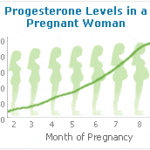
Welcome to our blog on breast self-exams! Breast cancer is a serious concern for many women, and early detection is key to successful treatment. One way to stay on top of your breast health is by performing regular self-exams. But when should you worry, and when should you seek medical help? In this blog, we’ll go over the purpose of breast self-exams, how to perform them, and what to do if you notice any changes. We’ll also address some common concerns and misconceptions about self-exams. So grab a cup of tea and let’s dive in!
Related: Benefits of Breastfeeding
What is Breast Cancer?
Breast cancer is a form of cancer originating in the breast tissue. It develops when the cells in the breast undergo abnormal division, resulting in the formation of a lump (malignant cells). If not addressed, these cells have the potential to proliferate and metastasize to various areas of the body.
When diagnosing breast cancer, a stage is assigned to assess the extent of the disease and its potential spread beyond the breast. The most effective way to prevent a late-stage breast cancer diagnosis is through the early detection of the disease using annual mammography and other breast examinations. In general, the chances of a successful outcome are higher when the cancer is detected at an earlier stage.
Related: How Do I Prepare for Breastfeeding?
Breast Cancer Statistics in the USA
Breast cancer is the most common cancer in women in the United States, except for skin cancers. Roughly 13% of women in the United States, which translates to about 1 in 8, will experience the development of breast cancer during their lifetime. It is estimated that in 2023, approximately 30% of all new women cancer diagnoses will be breast cancer. In 2023, an estimated 297,790 women and 2,800 men will be diagnosed with breast cancer in the U.S. Breast cancer accounts for about 30% of all new cancer cases in women each year in the United States.
Black women die from breast cancer at a higher rate than White women. Breast cancer is the second leading cause of cancer death among women overall and the leading cause of cancer death among Hispanic women. In the U.S., about 42,000 women and 500 men die each year from breast cancer.
Breast cancer death rates have been decreasing steadily since 1989, for an overall decline of 43% through 2020. The decrease in death rates is believed to be the result of finding breast cancer earlier through screening and increased awareness, as well as better treatments. However, the decline has slowed slightly in recent years.
Breast cancer incidence rates vary among different groups of people. Rates vary between women and men and among people of different ethnicities and ages. They vary across the U.S. and around the world.
Related: How Will My Breasts Change During Pregnancy? 7 Normal Breast Changes
Breast Cancer Survival Rates in the USA
Breast cancer survival rates can vary depending on several factors, including the stage of cancer, age, race, and gender. According to the American Cancer Society, the overall average 5-year survival rate for people with invasive breast cancer is 90%. Invasive breast cancer is any cancer that has already or is likely to spread. The survival rate for people who receive a diagnosis of breast cancer in the early stages (or localized cancer) is 99%.
The 5-year relative survival rate for women in the United States with non-metastatic invasive breast cancer is 91%, and the 10-year relative survival rate for women with non-metastatic invasive breast cancer is 85%. If the cancer has spread to the regional lymph nodes, the 5-year relative survival rate is 86%, and if the cancer has spread to a distant part of the body, the 5-year relative survival rate is 30%.
It is important to note that survival rates are estimates and are often based on previous outcomes of large numbers of people who had a specific cancer. They cannot predict what will happen in any particular person’s case. Additionally, survival rates do not account for individual factors, such as a person’s overall health and response to treatment.
Breast cancer incidence rates have been rising on average 0.4% each year over 2010–2019, while age-adjusted death rates have been falling on average 1.3% each year over 2011–2020. Breast cancer death rates have been decreasing steadily since 1989, for an overall decline of 43% through 2020. The decrease in death rates is believed to be the result of finding breast cancer earlier through screening and increased awareness, as well as better treatments. However, the decline has slowed slightly in recent years.
Related: Common Questions about Breastfeeding Twins
Comparison of Breast Cancer Survival Rates with Other Types of Cancer
In comparison to other types of cancer, the 5-year survival rate for breast cancer is higher than many other leading cancer sites, such as pancreatic cancer, which has a 5-year survival rate of only 1%. The 5-year survival rate for lung cancer is 18.6%, while the survival rate for colorectal cancer is 63.4% and the survival rate for prostate cancer is 98.2%. The 5-year survival rate for melanoma, a type of skin cancer, is over 99% when detected early.
It is important to note that survival rates are estimates and are often based on previous outcomes of large numbers of people who had a specific cancer. They cannot predict what will happen in any particular person’s case. Additionally, survival rates do not account for individual factors, such as a person’s overall health and response to treatment.
Related: Side Effects of Stopping Breastfeeding
Reason for increasing Breast Cancer Survival Rates
The survival rates for breast cancer are increasing as a result of advancements in treatments and healthcare. Detecting the disease at an early stage is crucial and can be achieved through screening programs and promoting self-examination awareness.
The sooner breast cancer is detected, the greater the likelihood of successful treatment. It is therefore essential to regularly examine your breasts and be able to distinguish between what is normal and what is abnormal for you. If any doubts arise, it is always recommended to consult your general physician or gynecologist.
What is a Breast Self-Exam?
Breast self-examination is a methodical process that enables women to monitor their breast health. It is essential for every woman to familiarize themselves with this procedure in order to detect any abnormalities promptly and seek immediate medical attention as soon as possible.
Why should you do a Breast Self-Exam?
Engaging in monthly breast self-exams aids in the identification of abnormal changes, infections, or the presence of breast lumps or spots that feel different. Early detection of cancer significantly improves survival rates. While breast self-exams are important for maintaining breast health, it is crucial to adhere to the recommended procedures and screening tests, such as mammograms, as advised by your healthcare providers. Additionally, it is vital to consult with your general physician or gynecologist in your local area even after performing self-examinations.
Is there a particular time of the month I should do a Breast Self-Exam?
Maintaining a monthly routine of breast self-examination is essential. It is recommended to perform the self-exam after 3-5 days of your regular menstrual cycle when your breasts are less tender and lumpy. Hormonal fluctuations during the menstrual cycle can lead to changes in breast tissue. Swelling typically subsides as your period begins. In case your menstruation is irregular or has stopped, you can choose any day each month to conduct the self-examination.
How long does a Breast Self-Examination take?
Incorporating a breast self-exam into your daily routine is quick and easy, requiring just a few minutes of your time. You can schedule this important step during various moments, such as when you’re getting dressed for the day or undressing at night, lying in bed in the morning or at bedtime, or while taking a shower.
How to do a Breast Self-Exam?
Performing a breast self-exam (BSE) is a simple yet crucial practice for maintaining breast health. Here’s a step-by-step guide on how to do a breast self-exam:
- Stand in front of a mirror with your upper body unclothed. Observe your breasts for any changes in size, shape, or symmetry. Look for any visible distortions, dimpling, or skin changes.
- Raise your arms above your head and check for the same changes mentioned above. Pay attention to the appearance of your breasts both with your arms raised and lowered.
- Examine your nipples for any signs of inversion, discharge, or changes in direction.
- Place one arm behind your head. Use the opposite hand to carefully examine the corresponding breast. Use the pads of your fingers, not just the fingertips, and apply light to medium pressure.
- Start from the outer edge of the breast and move your fingers in small circular motions, gradually working your way towards the nipple. Be thorough and cover the entire breast, including the armpit area.
- Repeat the same process for the other breast.
- While lying down, place a pillow or towel under your shoulder on the side you are examining. This helps to flatten the breast and make it easier to examine.
- Using the same circular motion with your fingers, examine the breast in a systematic manner, from the outer edge towards the nipple.
- Remember to check the entire breast area, including the upper and lower quadrants, as well as the armpit area.
- Finally, gently squeeze the nipple to check for any discharge.
Breast-Self Exam YouTube Video
What are the signs/symptoms of Breast Cancer?
Common signs/symptoms of breast cancer include:
- The presence of a lump or swelling in the breast, upper chest, or armpit
- Alterations in breast size or shape
- Changes in the texture of the skin covering the breast, such as puckering or dimpling
- Nipple inversion
- Nipple discharge or bleeding
- Rash or crusting on the nipple
To minimize the likelihood of developing breast cancer, the following measures can be taken:
- Adopting a healthy and balanced diet
- Maintaining a healthy weight
- Quitting smoking
- Limiting alcohol consumption
Incorporating these lifestyle modifications can help decrease the risk of breast cancer. However, certain factors are beyond our control and can contribute to an increased risk of developing the disease. These include:
- Being female (assigned at birth), as approximately 99% of breast cancer cases occur in women
- Having a family history of breast cancer, which necessitates consulting a general physician or gynecologist to manage the associated risks
- Advancing age, as approximately 80% of breast cancer cases are diagnosed in individuals over the age of 50.
How to check your Breasts?
Breasts exhibit diverse shapes, sizes, and densities in their healthy state. Familiarizing yourself with what is considered “normal” for you is crucial to promptly detect any changes. I recommend conducting regular self-examinations of your breasts or chest. Aim to perform these checks consistently on a monthly basis, preferably at the same time each month. It’s advisable to avoid conducting the examination during your menstrual period, as breast tenderness and cyclical changes can occur. Incorporating this “self-check” into your routine, such as during your shower, can help prevent forgetting to perform it. There is no specific right or wrong method for examining your breasts, but the following steps may serve as a useful guide:
Steps for breast self-examination:
- LOOK at your breasts in the mirror. Observe any skin changes, nipple inversion, nipple discharge or bleeding, and noticeable lumps or bumps. Become familiar with what appears normal for you.
- FEEL your breasts using the flat part of your four fingers. Divide the breast into quarters and thoroughly explore each section, feeling for any lumps, thickened tissue, pain, or sudden changes in shape or size.
- Remember to examine the upper chest area and armpits as well, as breast tissue extends into these regions. Look for skin changes and palpate for enlarged lymph nodes or lumps.
If you notice anything that raises concern during the self-examination, it is crucial to promptly schedule an appointment with your general physician or gynecologist.
Recommended Mammogram Screening Guidelines by Age
In the United States, mammogram recommendations vary slightly depending on different guidelines provided by reputable organizations. However, here are general guidelines for mammogram screenings based on age:
- For women aged 40 to 44: Mammograms are optional, and women can choose to start regular screenings if they wish to do so.
- For women aged 45 to 54: It is generally recommended to have an annual mammogram screening.
- For women aged 55 and older: Mammograms can be continued on an annual or biennial basis, depending on the woman’s preference and consultation with her healthcare provider.
It is important to note that individual circumstances and risk factors can influence the recommended screening schedule.
When to see your General Physician or Gynecologist?
While experiencing various symptoms can be worrisome, it is crucial to understand that not all breast lumps indicate cancer. In fact, approximately 9 out of 10 breast lumps are harmless and categorized as “benign.” Breast pain can also be attributed to other factors such as menstrual cycles (cyclical pain), pregnancy, or skin infections.
Although any new changes should be reported, it is especially important not to ignore the following “red flag” signs:
- Skin changes resembling an “orange peel” or dimpling
- Nipple inversion or the nipple appearing pulled inward
- Discharge or blood from the nipple
- Non-mobile lumps
- Growing lumps in size, even if they have been previously examined
- Lumps in the armpit or upper chest area
If you experience any of the above symptoms, it is highly recommended to seek a comprehensive assessment from your general physician or gynecologist.
Conclusion
Breast self-exams are an integral part of proactive breast health management. By familiarizing yourself with the normal look and feel of your breasts, you can better identify any changes that may require medical attention. Remember to consult a general physician or gynecologist if you notice any worrisome signs or symptoms. Early detection and timely intervention are key to improving outcomes and ensuring optimal breast health.
Frequently Asked Questions (FAQs)
How often should I perform a Breast Self-Exam?
It is recommended to perform a breast self-exam once a month, ideally a few days after your menstrual cycle ends.
Can Breast Self-Exams replace Mammograms?
No, breast self-exams are not a substitute for mammograms. Mammograms are specialized imaging tests that can detect abnormalities that may not be noticeable during a self-exam. Consult with your healthcare provider regarding the recommended frequency of mammograms based on your age and individual risk factors.
Are Breast Self-Exams effective in detecting Breast Cancer?
While breast self-exams can help individuals become familiar with their breasts and identify changes, they are not foolproof in detecting breast cancer. Regular self-exams, combined with clinical breast exams and mammograms, offer the best chance of early detection.
What if I find a Lump during a Self-Exam?
If you discover a lump during a self-exam, it is important to stay calm and schedule an appointment with a healthcare professional. Remember, most breast lumps are not cancerous, but it is essential to have them evaluated for proper diagnosis and peace of mind.
Are Breast Self-Exams necessary for men?
While breast cancer is more prevalent in women, men can also develop breast cancer. Men should be aware of any changes in their breast tissue and seek medical advice if they notice any abnormalities.
What is the role of genetics in Breast Cancer risk?
Certain genetic mutations, such as BRCA1 and BRCA2, are associated with an increased risk of developing breast cancer. If you have a family history of breast cancer or carry these genetic mutations, it is important to discuss your risk with a healthcare professional who can provide appropriate guidance and screening recommendations.














